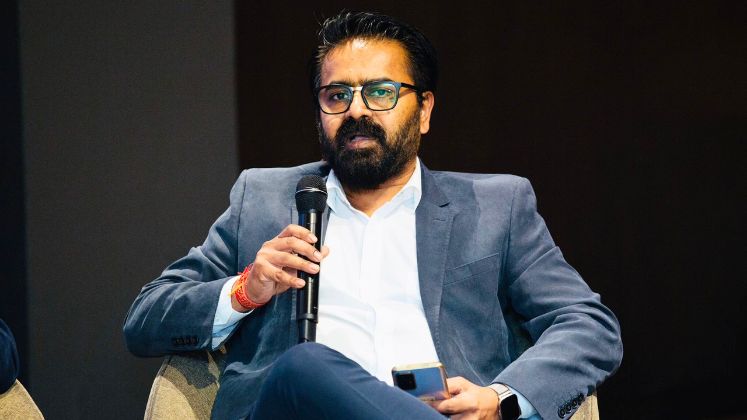Over the past decade, the global apparel sourcing landscape has undergone a radical transformation. The earlier focus on cost reduction has given way to a race for speed, transparency and traceability. Today’s global fashion brands are not just looking for cheaper suppliers—they are in search of strategic partners who can deliver quickly, provide real-time production visibility and ensure ethical sourcing backed by verifiable records.
In this rapidly shifting landscape, Industry 4.0 has moved from being a buzzword to business imperative. For Bangladesh, a global leader in apparel exports—earning over US $ 47 billion in 2023 and employing more than 4 million workers in its readymade garment (RMG) sector—the stakes are high. As the sector represents the backbone of the national economy and its international reputation, its future success depends on keeping pace with new buyer expectations.
Today, it’s no longer a question of whether factories should adapt, but how fast they can transition. Relevance in the global supply chain now hinges on this agility.
The Covid-19 pandemic was a turning point. It disrupted supply chains and shifted buyer expectations toward reduced lead times, diversified sourcing and increased digitisation. Factories are now expected to operate as connected, agile nodes within a global digital network. For Bangladesh, this is a pivotal opportunity—or risk—depending on its pace of change. More agile markets like Vietnam are moving fast, supported by strong policy and industry collaboration.
Understanding the New Language: Speed, Transparency and Traceability
Buyer expectations have evolved significantly and three critical metrics have come to define success:
- Speed is no longer limited to quick shipment—it demands agility in planning, responsiveness to demand and production flexibility. Leading fast-fashion players like Zara and Shein expect 15–25 day turnaround times. Achieving this requires more than manpower; it needs data-driven systems and real-time decision-making.
- Transparency is about offering buyers a digital window into factory operations. It includes live dashboards, workflow trackers and compliance reports—accessible at all times to ensure accountability across the production cycle.
- Traceability reaches from fibre to fashion. It involves tracking the entire journey of the garment—raw materials, chemicals, certifications and carbon impact. With brands focusing on ESG commitments, traceability data is now central to sustainable sourcing strategies.
Today, these metrics are built into sourcing scorecards and vendor audits. Being digitally visible has become synonymous with being reliable.
The Tech Driving Apparel’s Industry 4.0 Shift
Several key technologies are enabling this shift in apparel manufacturing:
- RFID and QR code tracking automates inventory movement and enhances visibility.
- ERP and MES systems enable smarter planning, line balancing and WIP monitoring.
- IoT-enabled machines provide predictive maintenance and operational efficiency.
- AI/ML tools improve demand forecasting and reduce overproduction risks.
- Blockchain, though early in its use, is being piloted by brands like H&M and C&A to create tamper-proof traceability records.
In Narayanganj, a leading knitwear manufacturer implemented RFID tracking on its sewing floor, which resulted in a 22 per cent increase in line efficiency and a 15 per cent reduction in turnaround time. This case highlights how even modest tech investments can drive performance improvements.
In addition, forward-thinking factories are exploring digital twins, cloud-based compliance tools and remote audits—all designed to improve buyer confidence through consistent, real-time reporting.
| “At Groyyo Consulting, we are driven by a singular purpose—to turn buyer expectations into achievable realities for manufacturers. We invite global apparel brands and manufacturers to collaborate with us for building factories of the future that deliver on speed, transparency and traceability. Let’s co-create the future of sourcing together. – Divya Mohan, General Manager – International Business, Groyyo Consulting |
Bangladesh’s Position: Strengths and Gaps
The industry has advantages, but also faces challenges:
- Only 18 per cent – 22 per cent of factories have adopted ERP or MES systems.
- Average lead times from Bangladesh remain 30–40 days, compared to Vietnam’s 15–25 days.
- Fewer than 10 per cent of suppliers have embedded digital traceability into their workflows.
- Despite this, Bangladesh still delivers 80 per cent of global basic knitwear—a reflection of its cost and scale leadership.
The opportunity lies in using this volume advantage to invest in systems and retain competitiveness. Vietnam’s leap ahead, driven by strong industry-government collaboration, sets a clear benchmark.
Buyer Feedback: What the Market Wants
Brands like Marks & Spencer and Decathlon are embedding digital expectations into their RFPs, including:
- Real-time production visibility
- QR-coded product traceability
- Digitally stored compliance records
At a recent BGMEA forum, a senior executive from a UK-based brand stated:
“We don’t mind paying more to suppliers who offer better visibility, traceability and compliance.”
This indicates a shift: brands are not just sourcing garments—they are sourcing systems. The ability to digitally document and demonstrate your process has become a minimum requirement.
Barriers to Digital Transformation
Manufacturers in Bangladesh face several common hurdles:
- High upfront investment for digital infrastructure
- Concerns about disrupting traditional workflows or retraining employees
- Incompatibility between legacy manual systems and new tech platforms
- Limited access to digitally skilled talent
However, transformation doesn’t need to be expensive. Affordable plug-and-play tech options exist, especially for MSMEs. Even digitising daily production logs or introducing barcode-based tracking can set the digital journey in motion.
| A factory’s greatest asset is no longer just its workforce or machinery— it’s data. Global buyers seek partners, not just suppliers. Those who provide realtime insights and sustainability will lead. Digital transformation isn’t optional; it’s the future. The real question is—who will lead it in Bangladesh? |
Utkarsh Mishra Manager, Groyyo Consulting
What the Factory of the Future Looks Like
Imagine a woven garment factory in Gazipur:
- The merchandiser inputs the order into a centralised planning system.
- AI tools simulate optimal line layouts.
- Real-time dashboards track fabric status, WIP and line efficiency.
- IoT sensors detect quality issues instantly.
- QR codes on each garment enable full traceability.
- Compliance data is auto-generated, digitally signed and stored securely.
This is not a far-fetched vision for 2030—it’s achievable by 2025 with the right mindset, planning and partnerships.
Steps to Begin the Digital Journey
Here’s a practical roadmap for manufacturers:
- Assess digital maturity: Use diagnostic tools to benchmark current status.
- Identify quick wins: Focus on high-impact areas like dashboard reporting and barcode tracking.
- Invest in people: Train your teams to adopt and operate digital systems.
- Choose the right partners: Work with consultants who understand both tech and factory environments.
- Scale in phases: Start with pilot projects, refine and expand progressively.
Digital transformation is not a sprint but a journey. Factories that adopt a learning mindset and adapt in phases will remain competitive.
Ecosystem Support and Momentum
Bangladesh’s Digital RMG Vision 2030, supported by BGMEA, Swisscontact, IFC and GIZ, is laying a robust foundation for the sector’s digital shift. Groyyo Consulting is also helping manufacturers create practical roadmaps combining business process engineering with scalable technology solutions.
Adopting digital tools doesn’t just improve efficiency—it fosters trust. Providing QR traceability, live dashboards and digital compliance builds stronger buyer relationships. In volatile markets, this trust can secure order continuity and preferred vendor status.
Moreover, digital traceability is essential for ESG compliance. Factories that can document ethical practices, sustainable materials and lower emissions stand a better chance of making it to the top of sourcing lists.
Bangladesh has the scale, the experience and the entrepreneurial energy to remain a global sourcing leader. What it needs now is visibility— the ability to prove compliance, quality and responsiveness digitally.
Industry 4.0 is no longer optional. It’s about more than just technology—it’s about meeting buyer expectations, staying competitive and building resilience.







